Marshall Islands Flag Meaning
A blue field with diagonal orange and white stripes extending from the lower left, and a white 24-pointed star in the upper left corner, representing the Pacific Ocean, the island chains, and the Christian faith of this coral atoll nation.
- Continent
- Oceania
- Adopted
- 1979
- Ratio
- 10:19
- Colors
- blue, orange, white
- Designer
- Emlain Kabua
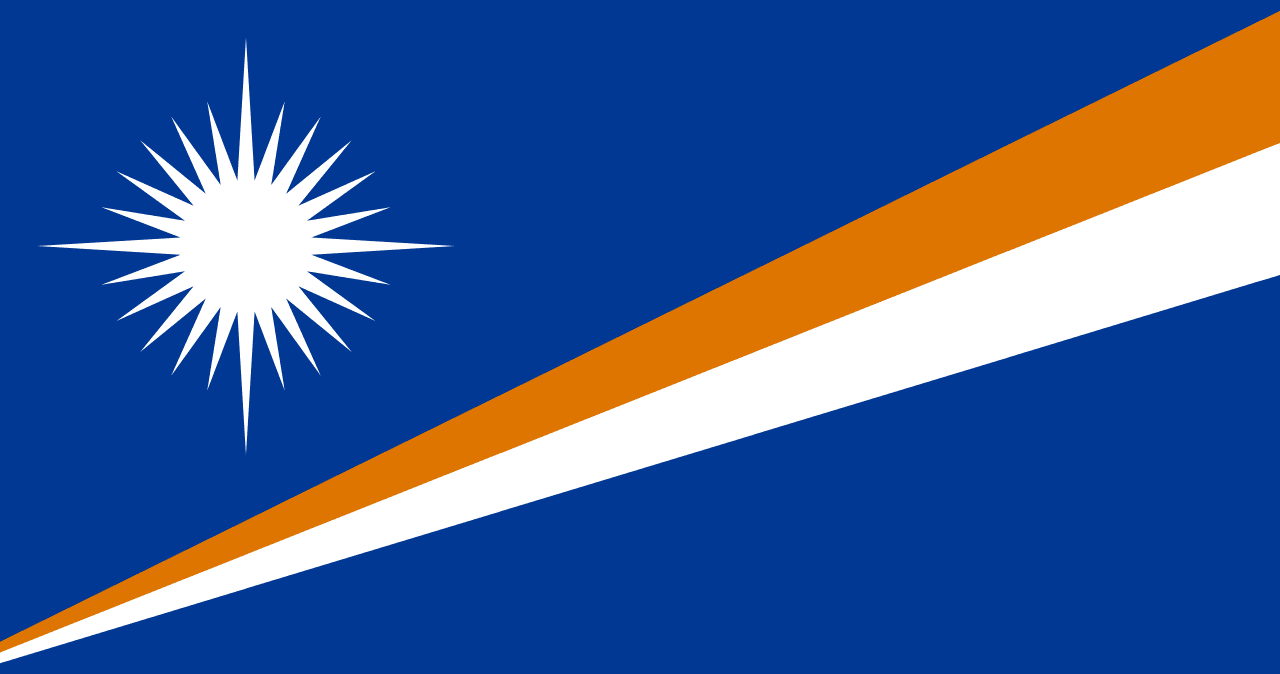
Symbolism
Blue Field: Represents the vast Pacific Ocean that surrounds the Marshall Islands, emphasizing the nation's maritime identity and dependence on the sea for transportation, food, and livelihood.
Orange Stripe: Symbolizes courage, bravery, and wealth. Also represents the Ralik Chain (sunset chain) of islands in the western part of the Marshall Islands, where the sun sets over the Pacific.
White Stripe: Represents peace, purity, and brightness. Also symbolizes the Ratak Chain (sunrise chain) of islands in the eastern part of the Marshall Islands, where the sun rises over the Pacific.
24-Pointed Star: Each point represents one of the 24 municipalities of the Marshall Islands. The star also symbolizes the cross of Christianity, reflecting the strong Christian faith of the Marshallese people.
Diagonal Design: The diagonal stripes extending from the lower left represent the equator and the path of growth and progress, symbolizing the nation's development and aspirations for the future.
History
- Pre-1944: The Marshall Islands were successively controlled by Spain, Germany, and Japan, with traditional Marshallese navigation and cultural symbols but no unified flag for the scattered atolls.
- 1944-1979: The islands became part of the Trust Territory of the Pacific Islands under United Nations mandate administered by the United States after World War II.
- 1965-1975: Discussions began about self-governance and the development of distinct Marshallese identity separate from the broader Trust Territory administration.
- May 1, 1979: The Marshall Islands adopted their national flag as they gained self-governance under the Compact of Free Association negotiations with the United States.
- October 21, 1986: The Marshall Islands gained full independence under the Compact of Free Association with the United States, and the flag became the symbol of a sovereign nation.
- 1986-Present: The flag has represented the Marshall Islands through various challenges including climate change concerns and economic development while maintaining the special relationship with the US.
- 2000s-Present: The flag has gained international recognition as the Marshall Islands became a vocal advocate for climate action due to sea-level rise threats to the low-lying atolls.
Trivia
- The Marshall Islands flag was designed by Emlain Kabua, the wife of the first president, making it one of the few national flags designed by a woman.
- The 24-pointed star is unique among national flags, specifically representing the exact number of municipalities in this small Pacific nation.
- The Marshall Islands consist of 29 coral atolls and 5 islands, making it one of the lowest-lying countries in the world with highest elevation of only 10 meters above sea level.
- The flag represents a country in free association with the United States, meaning Marshallese citizens can live and work in the US without visas.
- The diagonal design makes the Marshall Islands flag one of the most distinctive in the Pacific, easily distinguished from other blue Pacific flags.
- The orange and white stripes represent the two main island chains (Ralik and Ratak), which are the geographic foundation of Marshallese identity and governance.
- The flag appears on US dollar bills used in the Marshall Islands, as the country uses American currency due to the Compact of Free Association.
- Traditional Marshallese navigation used stick charts and star knowledge, making the star symbolism particularly meaningful for the maritime culture.
- The Marshall Islands is one of the most climate-vulnerable nations on Earth, and the flag often appears in international climate change discussions.
- The flag flies over Majuro Atoll, which houses about half the country's population despite being one of the world's most densely populated places.
- Marshall Islands gained international attention for its nuclear testing legacy, and the flag represents the nation's advocacy for nuclear disarmament.
- The flag appears prominently during Manit Day celebrations, commemorating Marshallese culture and traditional navigation skills.
- The country has one of the world's largest ship registries, and the flag appears on thousands of commercial vessels worldwide flying under Marshall Islands flag of convenience.
- The flag represents a nation where traditional chiefs (Iroij) still play important roles in governance alongside the modern democratic system.
- Climate adaptation projects often feature the Marshall Islands flag, as the country leads international efforts to address sea-level rise affecting small island states.
Related Countries
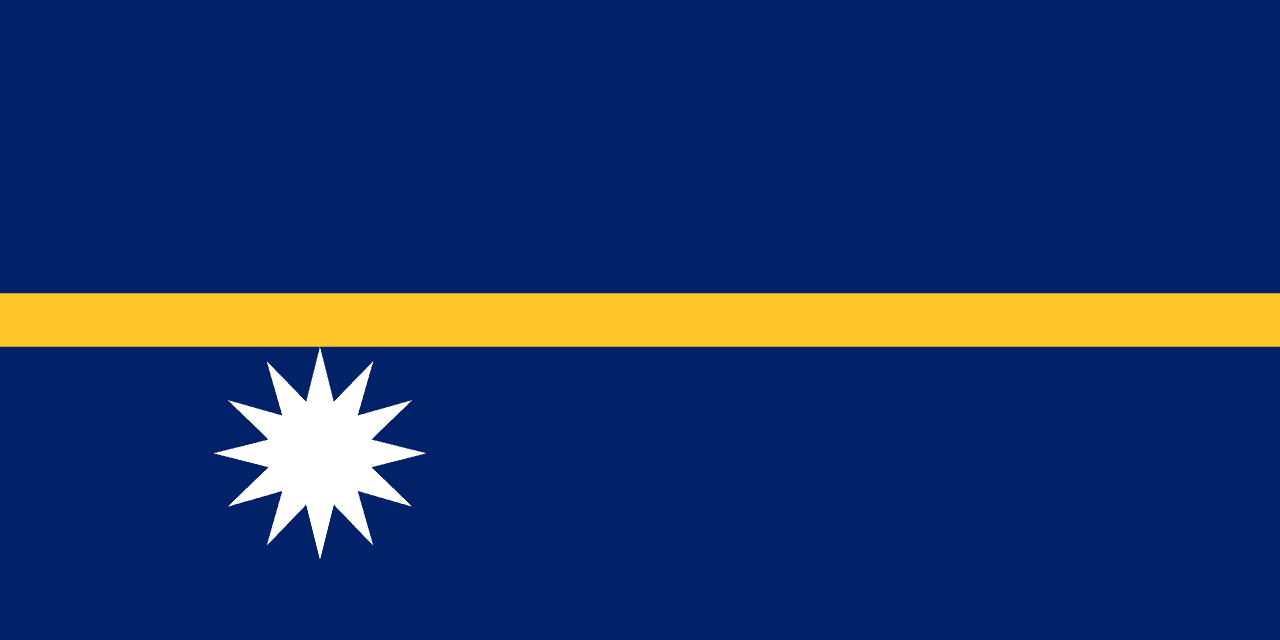
Nauru
Oceania
A blue field with a horizontal yellow stripe across the center and a white twelve-pointed star below the stripe near the hoist. The design reflects Nauru’s position just south of the equator and its cultural identity.
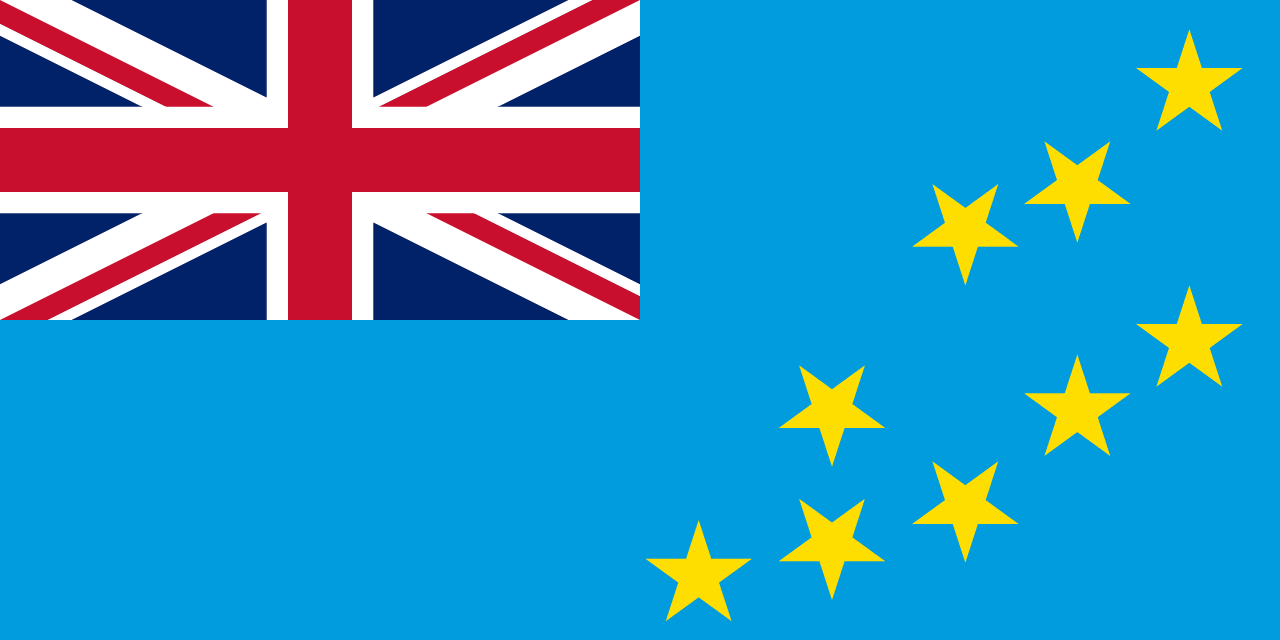
Tuvalu
Oceania
A light blue field with the Union Jack in the canton and nine yellow stars representing the nine atolls of Tuvalu, symbolizing the Pacific Ocean that surrounds the islands, the historical connection to Britain, and the geographical arrangement of the island nation in the central Pacific.
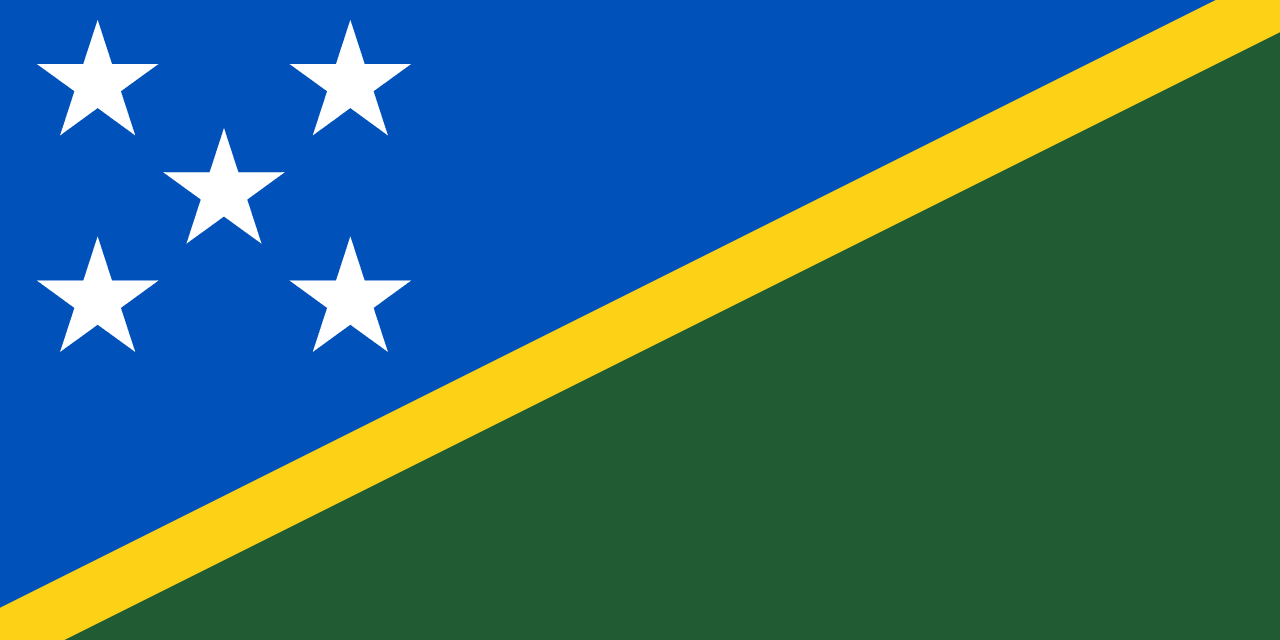
Solomon Islands
Oceania
A blue triangle in the upper hoist and green triangle in the lower fly, separated by a thin yellow diagonal stripe, with five white five-pointed stars arranged in an X pattern in the blue triangle, representing the ocean, land, sunshine, and the five main island groups of this Melanesian nation.
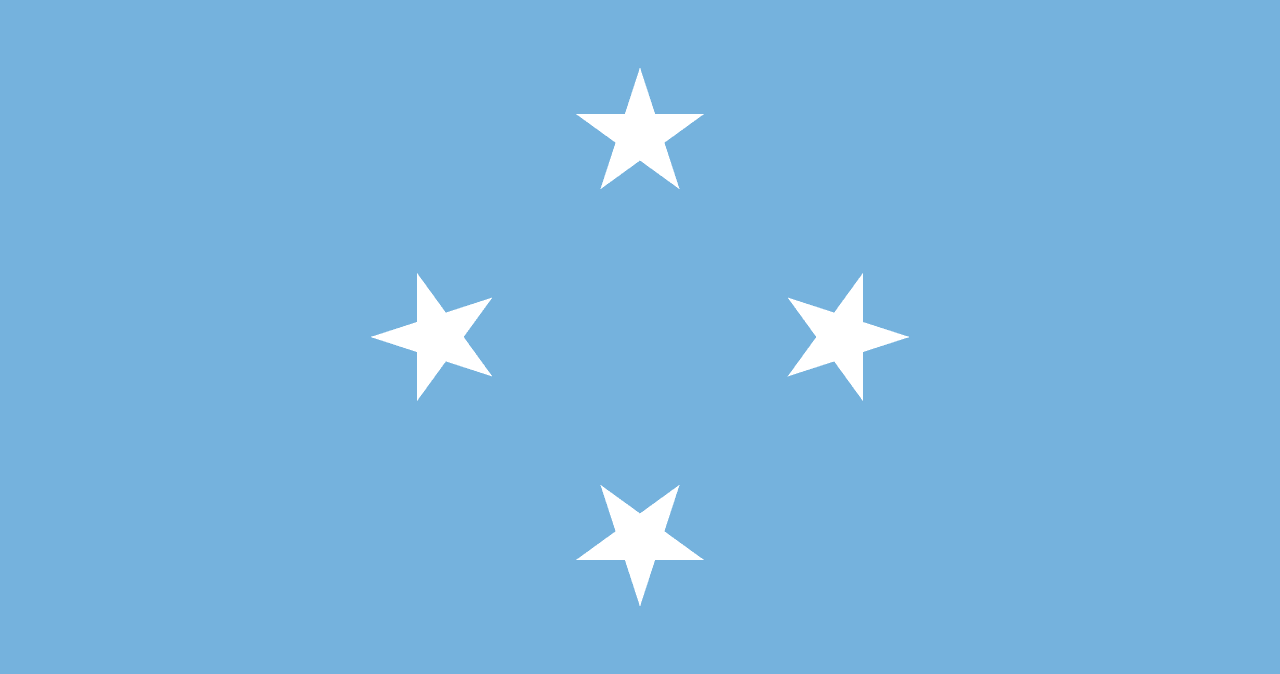
Micronesia
Oceania
Four white five-pointed stars arranged in a diamond pattern on a light blue field, representing the four states of the Federated States of Micronesia surrounded by the Pacific Ocean.
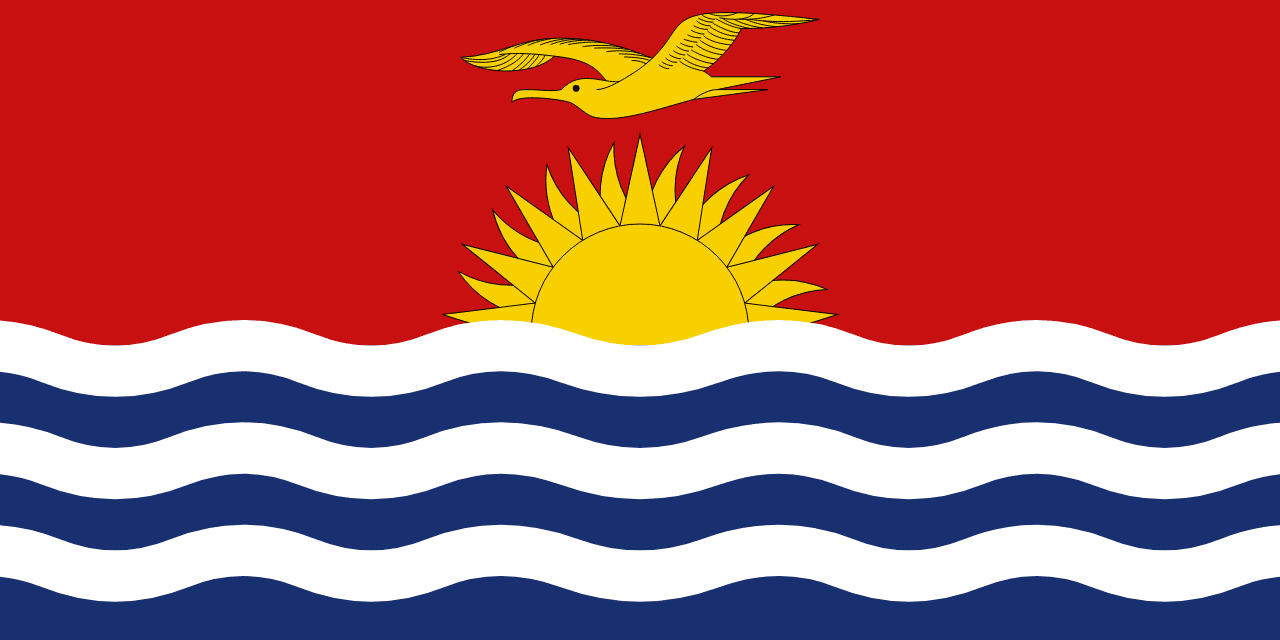
Kiribati
Oceania
A red upper field with a golden frigatebird flying over a rising sun above blue and white wavy stripes, representing the Pacific sunrise, ocean waves, and the unique geography of this coral atoll nation spread across the international dateline.
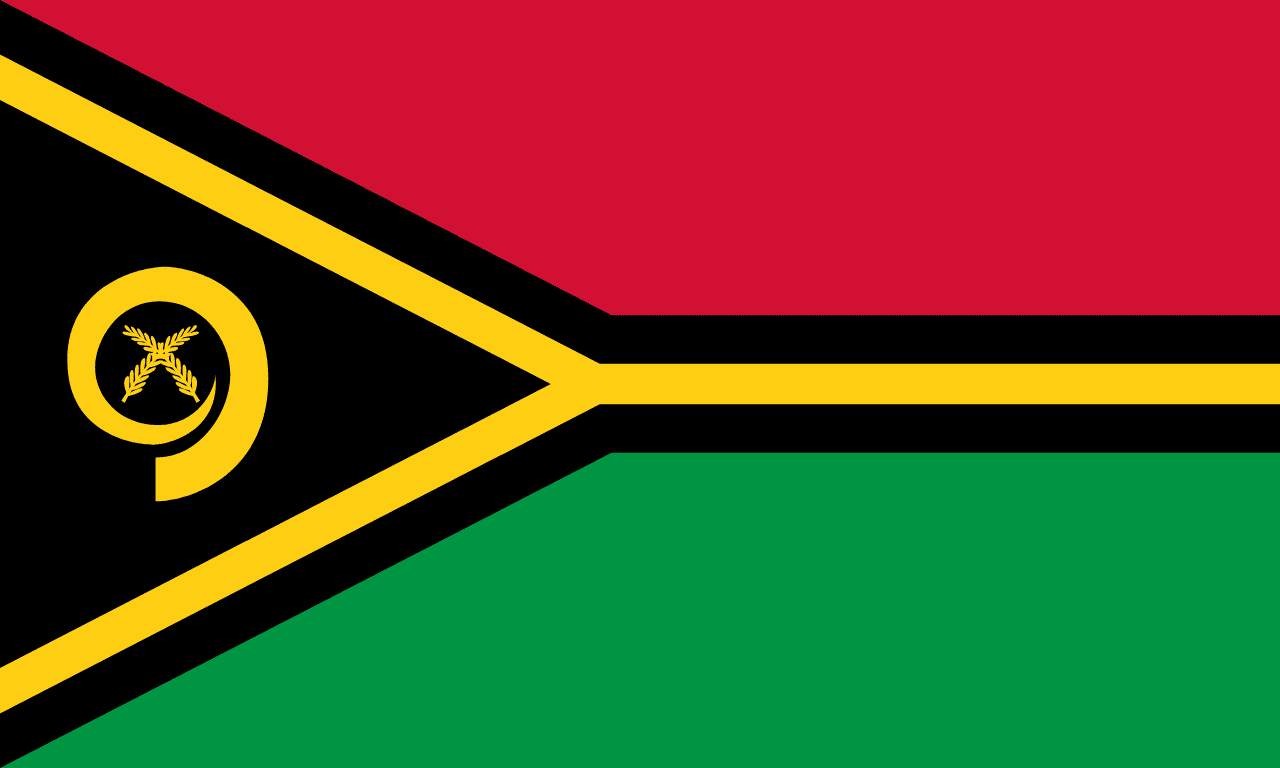
Vanuatu
Oceania
Red and green horizontal bands separated by a black stripe edged in yellow, with a yellow Y-shape extending from the hoist containing a boar's tusk and two crossed fern leaves, representing the blood of sacrifice, the rich soil, the Melanesian people, enlightenment, and traditional Melanesian values and culture.